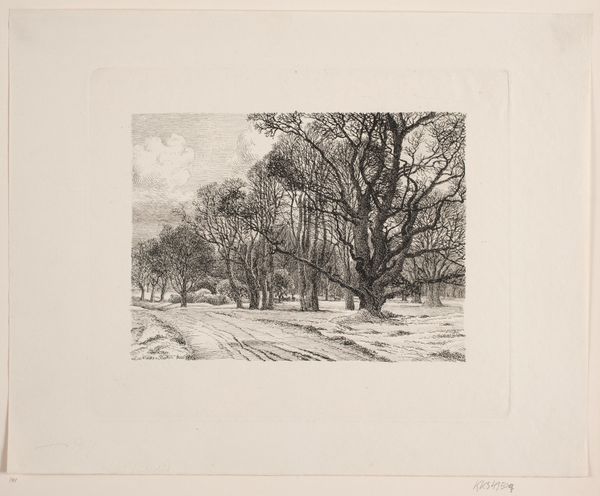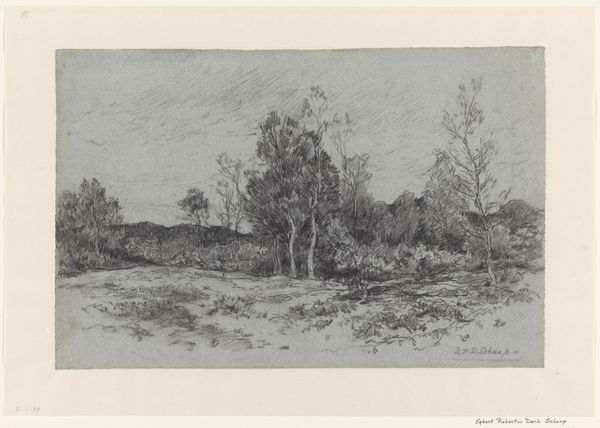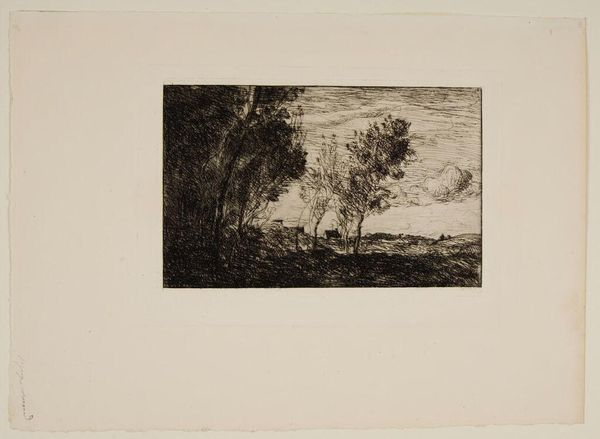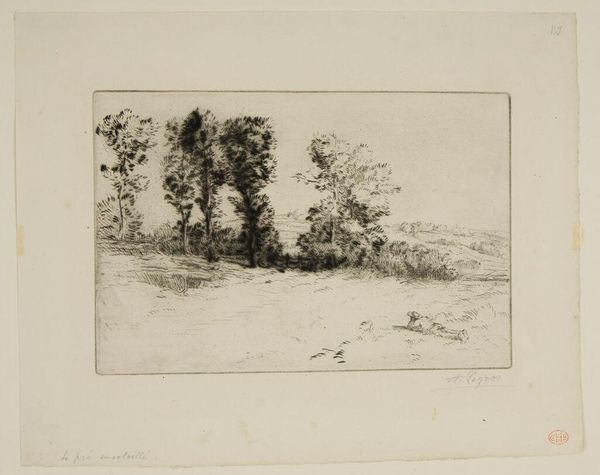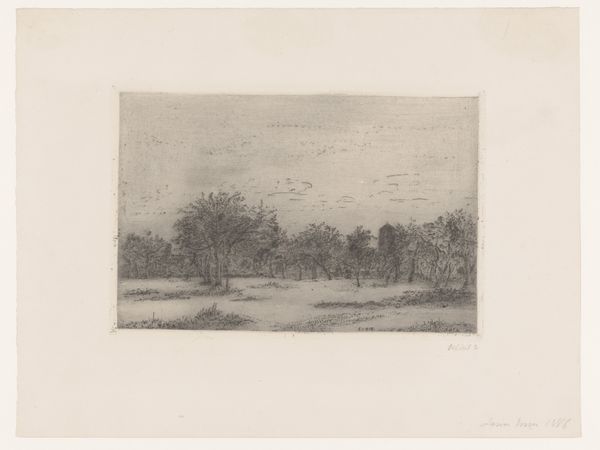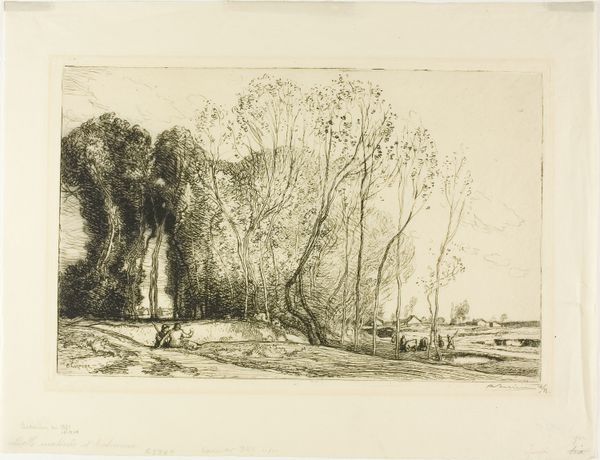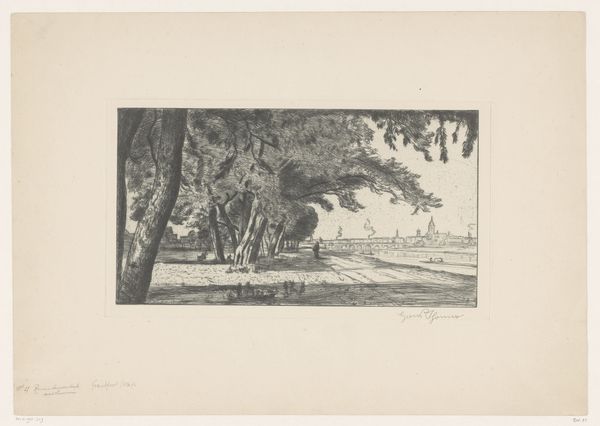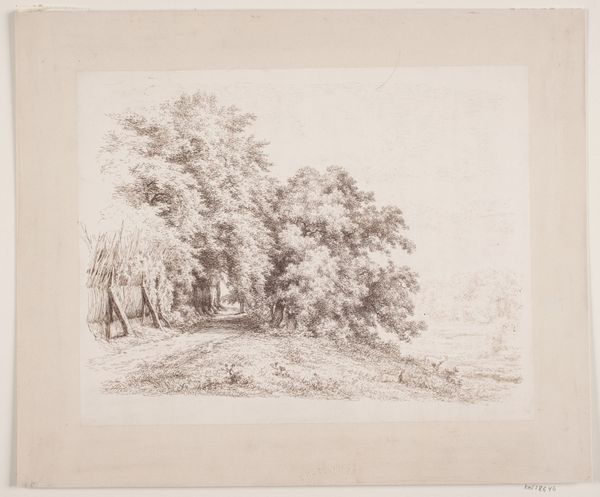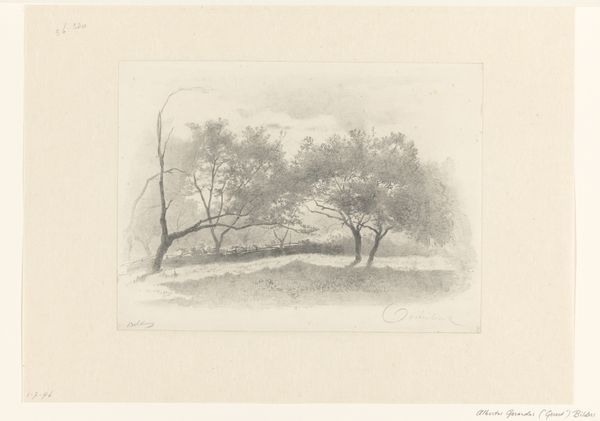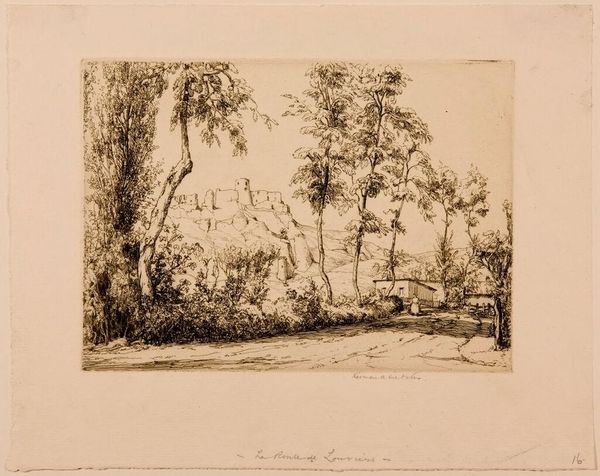
Dimensions: 4 7/16 x 6 11/16 in. (11.27 x 16.99 cm) (plate)7 1/2 x 9 in. (19.05 x 22.86 cm) (sheet)15 x 19 x 1 1/2 in. (38.1 x 48.26 x 3.81 cm) (outer frame)
Copyright: No Copyright - United States
Editor: Here we have Gustav Goetsch's "Willows on Lake of the Isles," a 20th-century etching. The scene is quite somber, muted... I feel like I'm looking at a memory. What do you see in this piece? Curator: It invites us to consider the landscape not just as a pretty picture, but as a reflection of societal values and power structures. The willows, often associated with mourning and resilience, frame the 'Lake of the Isles,' calling into question whose narratives are centered in representations of American nature and who is excluded. Editor: That's an interesting point! I hadn’t considered the exclusion aspect. Do you mean who gets to experience and appreciate this landscape, or something deeper? Curator: Both! Whose access is granted and whose gaze defines what is beautiful, valuable, and worthy of preservation. The very act of portraying this scene freezes a moment, privileging a particular interpretation and experience of nature – usually one divorced from indigenous presences. We have to ask if these picturesque scenes overshadow the true complexities of the relationship between humans and nature. Does it flatten histories? Editor: That’s a lot to unpack... the connection between artistic choices and broader socio-political implications is fascinating. So, the romantic view, in this case, kind of masks the reality of how that landscape came to be? Curator: Precisely! It asks us to look at the undercurrents of idyllic settings. Editor: I'll definitely look at landscapes differently now! It makes you realize how loaded these seemingly peaceful images can be. Curator: Indeed. It's about understanding that art isn't created in a vacuum and landscape, even, has political implications.
